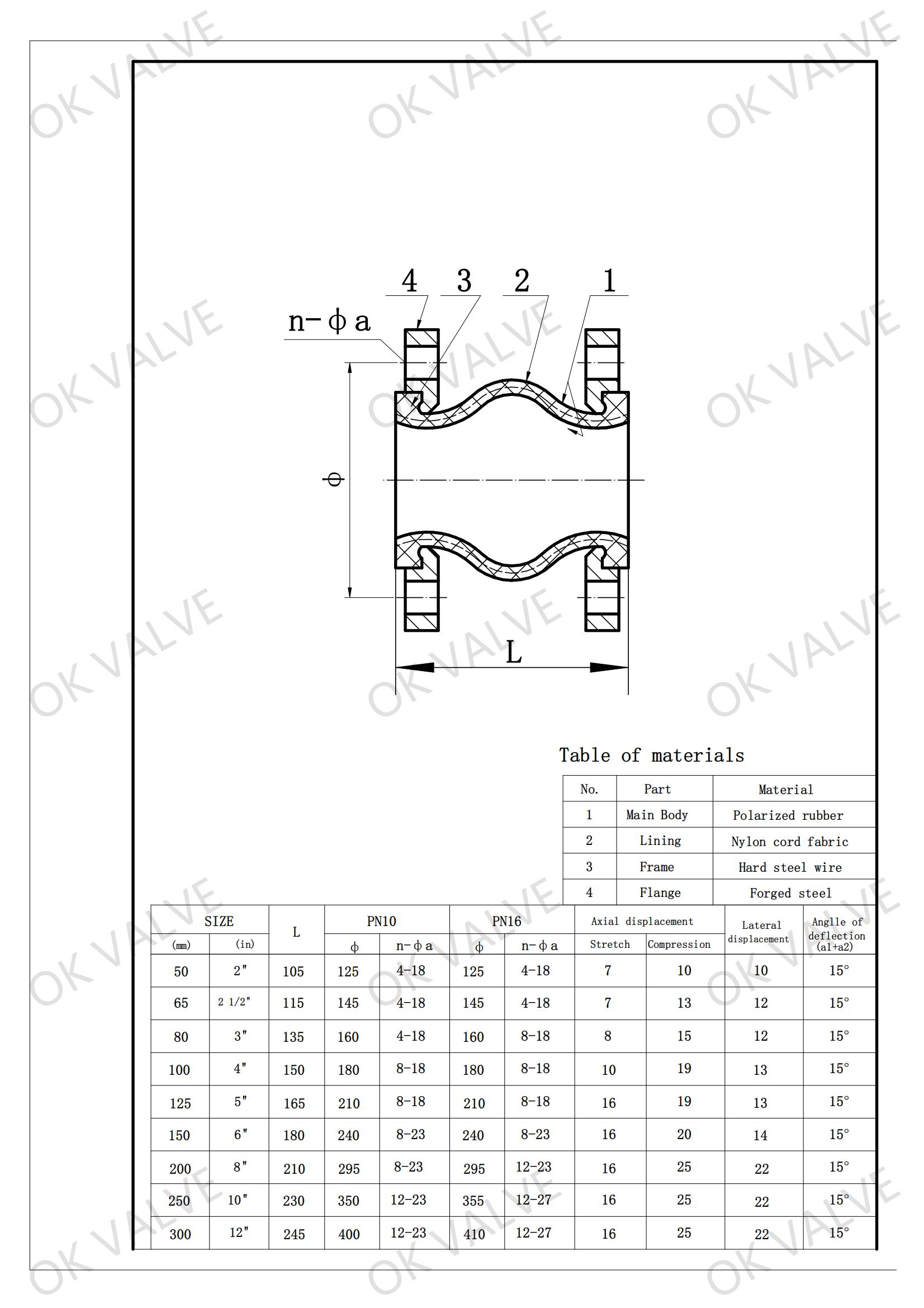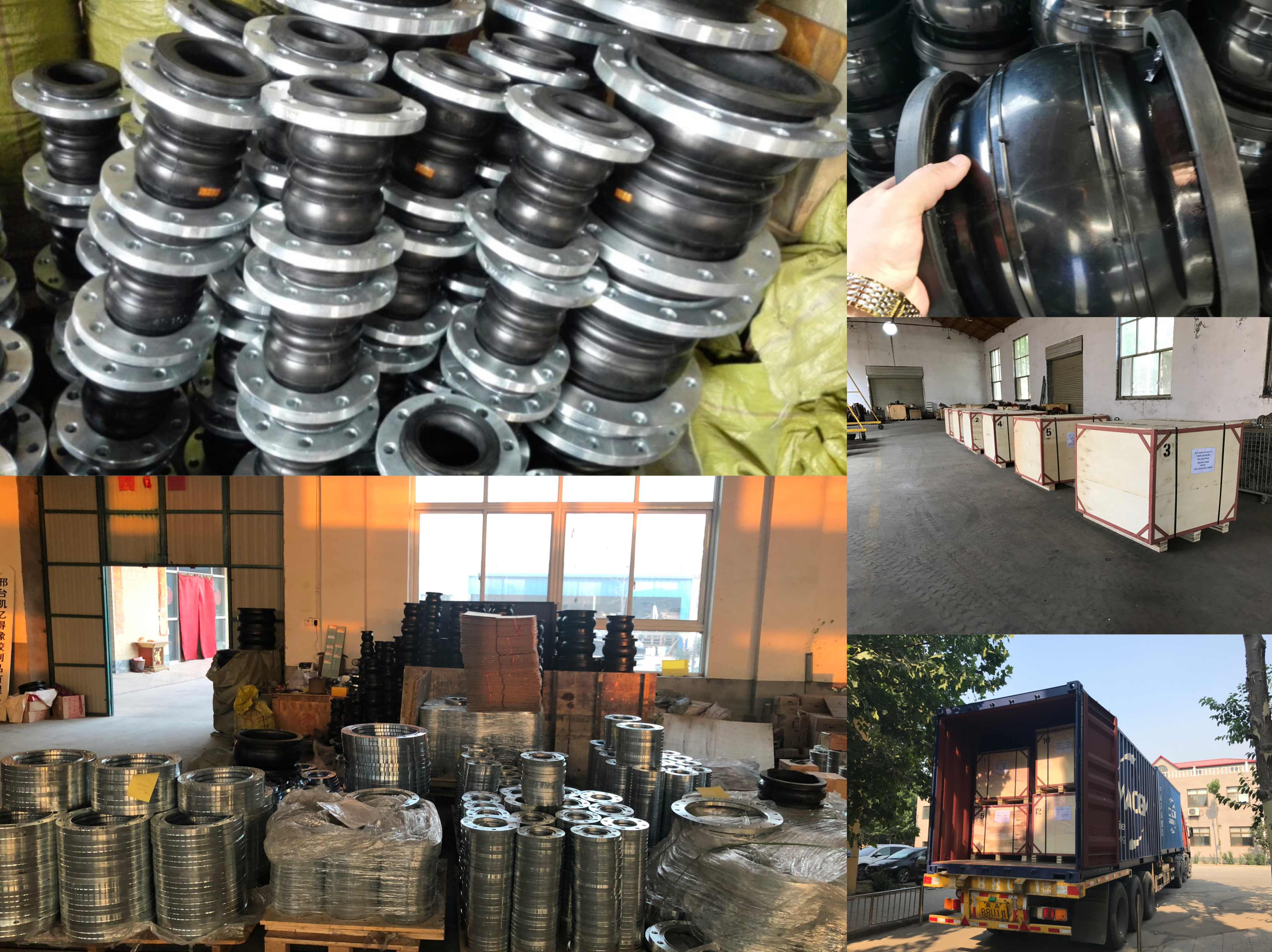Rubber Expansion Joint Surface of the waveform compensating element is rubber, and the inner layer is a sandwich reinforced with several layers of strong fiber or steel tape (wire). A reinforcing sandwich, such as a reinforcing fiber or steel strip (wire), extending to a gelatinlike flange at both ends with a hard steel wire frame inside the flange. The rubber expansion joint has a large displacement compensation ability, can be axial, transverse and angular displacement compensation, noise reduction, vibration reduction and a certain anti-corrosion ability. Its high pressure resistance, good elasticity, large displacement, vibration absorption and noise reduction effect, convenient installation and other characteristics, can be widely used in water supply and drainage, HVAC, fire fighting, compressor, papermaking, pharmaceutical, shipping, water pump, fan and other pipeline systems.



